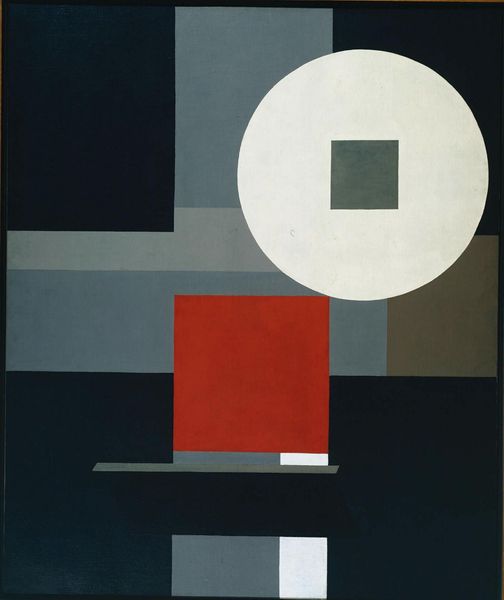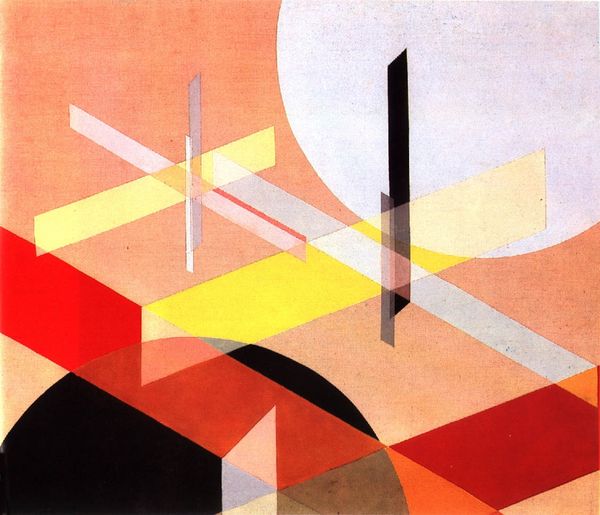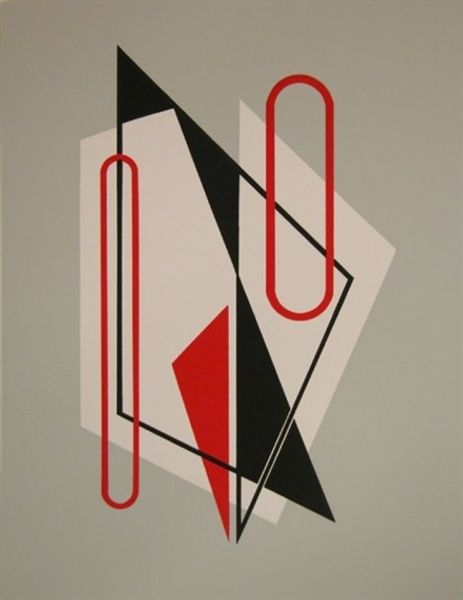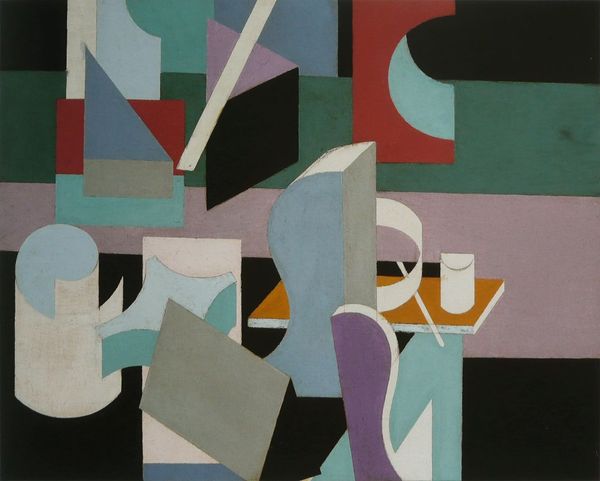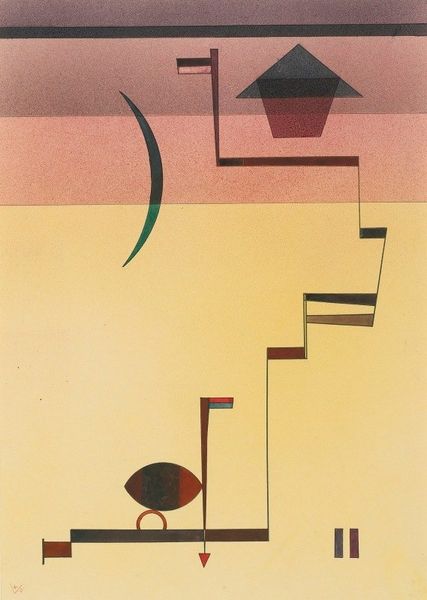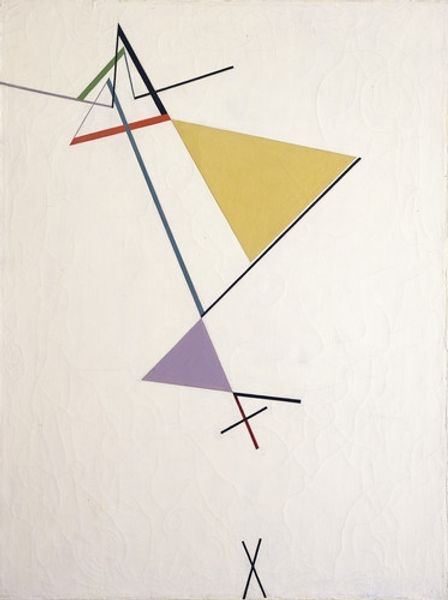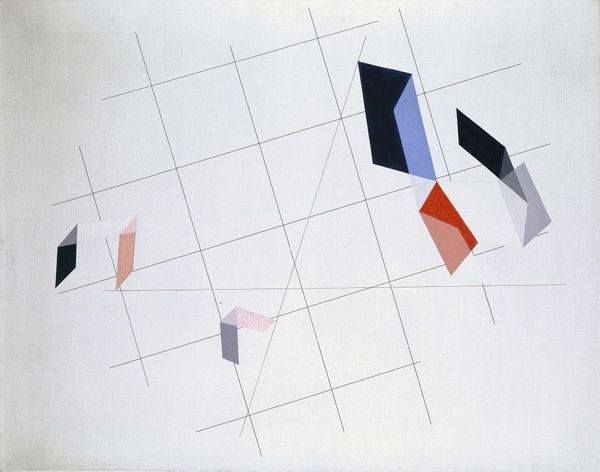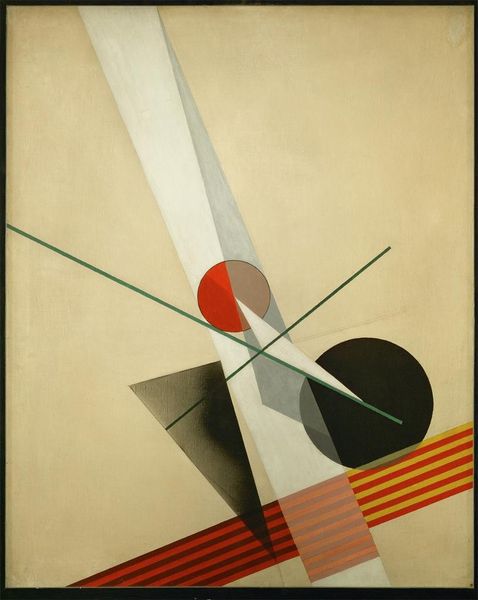
acrylic-paint
#
acrylic
#
mixed mediaart
#
constructivism
#
acrylic-paint
#
abstract
#
form
#
geometric
#
line
#
modernism
Copyright: Public Domain: Artvee
Curator: Lászlo Moholy-Nagy’s "A IX," created in 1923, offers a striking example of Constructivist painting, rendered through acrylic-paint, acrylic, and mixed media. It makes me wonder, what's your initial reaction? Editor: A sense of cool detachment, I think. The geometric shapes and the limited palette create this very calculated, almost sterile environment on the canvas. Curator: It’s definitely a piece that aligns with the Bauhaus philosophy— the emphasis on pure form and the rejection of ornamentation were central tenets. What do you make of its relationship to industrial aesthetics? Editor: I see echoes of a machine age, that striving for efficiency and order. But it also reminds me how modernism's promise of objectivity was often a facade, masking social inequalities. Did everyone benefit equally from this new "efficiency?" Curator: That’s a crucial point. This was created during the interwar period, a time of rebuilding and utopian visions, and yet… who were those visions for? The severe geometry, the flat planes of color – were these elements intended to suggest accessibility, a kind of visual language for the masses, or did it become co-opted by certain elite groups? Editor: Absolutely. And consider the very *absence* of human figures. It implies a world run by abstract forces, where the individual is almost irrelevant. It evokes themes of power and control and raises important questions about agency within society. How much are our lives predetermined by the shapes of ideology? Curator: That’s such a powerful interpretation, especially thinking about the sociopolitical landscape of Europe at that time. But you’re right – the artist has to think about how those dynamics inevitably will inflect on the work. It also made me remember how photography impacted painting, too. Moholy-Nagy saw abstraction as a new kind of objective image, one that reflected the world’s underlying structures. Editor: Ultimately, art serves as a mirror to our values, regardless of intent. It forces us to examine the structures of society. "A IX," whether deliberately or not, still makes me think about issues of accessibility, exclusion, and what shapes our perceptions of reality. Curator: Absolutely. I think I can leave feeling like my perspectives have changed too. Editor: I agree. This painting presents an aesthetic that pushes us toward conversations we can’t simply resolve or forget, and to continually probe the narratives we find within it.
Comments
No comments
Be the first to comment and join the conversation on the ultimate creative platform.


